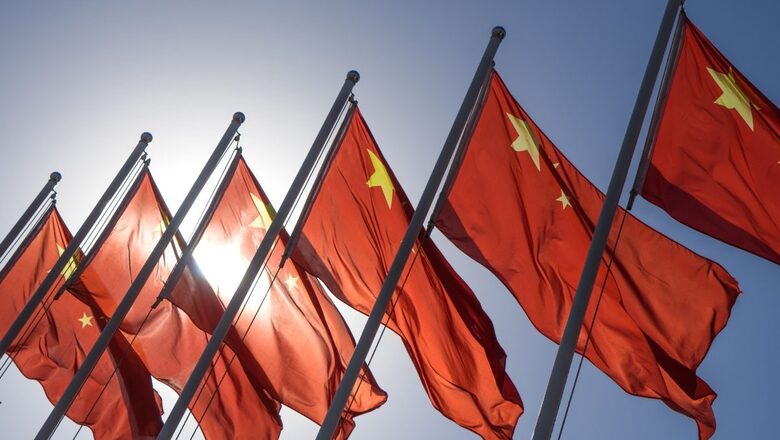
views
Spamouflage Dragon (also known as DragonBridge) is a Chinese propaganda network that has been fully active on social media platforms since 2017-18. Intended to spread disinformation campaigns and to boost pro-China image, this network linked with the Chinese government has attempted to influence global narratives through its operation.
In 2019, Graphika, a network analysis firm, identified this network for spamming accounts with carefully crafted content to build and spread political narratives in favour of China. This network is active on major and popular social media platforms like YouTube, Twitter and Facebook. Besides its push for pro-China narratives, Spamouflage Dragon also targets critics and dissenters of China, both at home and abroad, in order to discredit them.
When Spamouflage Dragon first began its disinformation campaign, it primarily operated to attack Chinese billionaire and known exiled critic of Chinese Communist Party Guo Wengui and the pro-democracy activists in Hong Kong. Using hijacked or repurposed accounts on these popular social media platforms, posts with political content, original cartoons and videos in Chinese were shared. This was done via creation of primary spam accounts and its amplifiers (cluster of fake accounts) to spread the disinformation through shares and comments. This was done to give the impression of an organic community.
Moreover, the campaign repeatedly shared the same content in the same manner. At times it was done through fake accounts suggesting that the whole process was automated. Its tactic of hiding the political nature of their content through high volumes of other spam-like contents such as TikTok videos is what made “Graphika” nickname this network as ‘Spamouflage Dragon’ (Spam plus Camouflage).
Besides its tactic, Spamouflage Dragon’s noteworthy feature is its endurance. Following its exposure by “Graphika” and eventual takedown by social media platforms in late 2019, the network largely went into hiding. However, it made its comeback in 2020, with newer tactics and assets, at the time when China was at the receiving end of global criticism for its (mis)handling of Covid-19 pandemic. Through memes and videos in Chinese, it continuously praised China’s handling of the pandemic outbreak.
Spamouflage Dragon has upped the game after making a comeback as now it produces and spreads a lot of content in English. Through this, it has attacked the US, targeting its politicians and institutions. It has tried to influence the general course of politics in the US by trying to project anti-China policies of the US as “US hypocrisy”.
Both new and old tactics were used following its resurgence and subsequent attack on the US through use of machine-generated profile images, cross-platform persona, and combination of a batch created, hacked and repurposed spam accounts, as per the “Graphika” report.
Post-2020, one of the striking features of Spamouflage is its massive expansion across all dimensions; size, scope and sophistication. In 2021, its operations expanded to spread propaganda denying the human rights violation in Xinjiang, which has caught global attention attracting widespread condemnation. Using hashtags like #StopXinjiangRumours across Twitter and YouTube, the CCP’s decentralised disinformation campaign attempted to shape the global narrative on Xinjiang through new narratives which showcased testimonials of “happy lives” of Uyghurs in Xinjiang.
Several social media influencers shared narratives which favoured China’s policy in Xinjiang that has masqueraded brutal repression by showing glitzy videos of development in the region. Using the hashtag Xinjiang, the campaign also attempted to change the course of narrative to a positive direction, focusing on its agricultural prowess and cotton production. The Spamouflage Dragon also carried out its aggressive propaganda and disinformation campaign on other regional issues relating to Taiwan and Hong Kong.
In 2022, the campaign intensified its criticism against the US, alleging it of meddling with the domestic affairs of other countries and instigating political tensions abroad. Activities generally involved in targeting the then US House Speaker Nancy Pelosi in an attempt to discredit her political leadership, following her visit to Taipei, Taiwan. However, it was revealed that the campaign’s content, besides its spammy nature, is of poor quality and without an audience (in terms of views and subscription).
At the peak of the US’ midterm election in 2022, Spamouflage Dragon’s activities faced disruption when over 50,000 of its accounts were removed by Google across YouTube, Blogger, and AdSense. It was reported that the disinformation campaign intended to influence Americans voters and urged them to not vote, through its criticisms of the American elections and democracy in general.
In late 2022, “Graphika” reported that it found instances of Spamouflage promoting content that involved use of deep-fake (artificially-generated) news anchors for spreading anti-US propaganda news on social media. Under the name of a fictitious media company brand ‘Wolf News’, the videos used multiple languages such as Arabic, Spanish, Romanian and English for extending Chinese political influence operations. The (mis)use of technology for such purposes by China is indeed concerning.
In August this year Meta closed down nearly 9,000 Facebook and Instagram accounts linked to the Spamouflage Dragon campaign after finding its covert influence operation over 50 platforms with targets in Australia, UK, US and elsewhere. About 7,704 Facebook accounts, 954 pages, 15 groups and 15 Instagram accounts with the Chinese originated network were identified by Meta as “violating the company’s inauthentic behaviour policy.”
It further identified a significant number of these accounts running from a shared location, such as an office, with a surge of its activities in shift patterns in the morning and afternoon Beijing time.
Moreover, as a diversion from its old tactic before its shutdown in 2019, the campaign, linked to Spamouflage, now shifted its operation to smaller platforms, predominantly in Asia and Africa. However, it has retained its usual disinformation tactic. It continues to promote pro-China commentaries about regional affairs such as Xinjiang. It discredits those who are critical of the Chinese government. One of the key target areas is Criticism of American and Western foreign policies which are aimed at countering China.
One of the biggest propagandas in this context was the publication of a 66-page “research paper” claiming the origin of Covid to be in the US. In September, Alethea, a technology company that detects, assesses and mitigates disinformation threats, identified Spamouflage-linked network of accounts spreading to American alt-platforms such as Gab, indicating the depth and reach of Chinese influence operations in the US.
This new expansion to such platforms is evidence of China’s efforts to enhance influence on the American electorate ahead of its 2024 presidential election. The latest target by Chinese-linked Spamouflage is Canada as detected by Canadian federal government’s Rapid Response Mechanism (RRM) whereby its target has been Canadian political figures like Prime Minister Justin Trudeau and several other Canadian MPs.
Notwithstanding the expansion, sophistication and adoption of newer tactics and targets, the impact of China’s Spamouflage Dragon may not be that high due to its poor content quality, spammy nature and low subscriber base; but the intentions are clear. China wants to interfere in the political process of other countries and influence it to suit its own needs. That seems to be an itch that would not go away soon.
The writer is an author and columnist and has written several books. He tweets @ArunAnandLive. Views expressed in the above piece are personal and solely that of the author. They do not necessarily reflect News18’s views.




















Comments
0 comment